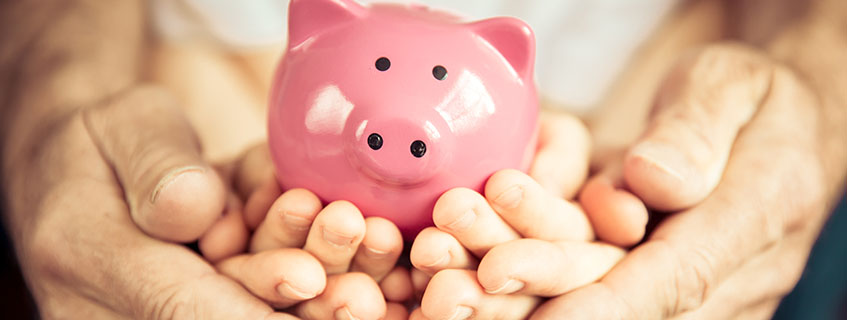
The UK investing ecosystem is particularly child-friendly because:
- Britain’s generous range of tax shelters and tax allowances extends to children too.
- UK stockbrokers enable you to quickly set up affordable junior accounts and invest in suitable investments such as ETFs from as little as £25 per month.
ETF investing for children
Investing for children makes financial sense because you can invest for them over the long-term, taking advantage of the magic of compound interest.Having time on your side is a massive advantage because you can use the simple but powerful buy and hold strategy, safe in the knowledge that you and your child can wait out any market turbulence along the way. That classic strategy works even better for children than for adults because they don’t tend to worry about how their portfolio is doing!
Children can’t access a Junior ISA (JISA) until age 18 or a Junior SIPP until minimum pension age (which will be age 58 and upwards), so your investments will have years to grow.
ETFs are the ideal product to use because they are low-maintenance and low-cost, yet effectively capture the long-term growth of the stock market like a solar panel harnesses the energy of the sun.
The advantages of ETFs at a glance
- ETFs are easy to understand and do not require detailed market knowledge.
- ETFs are highly diversified: they spread risk across hundreds and even thousands of companies across global markets – they don’t rely on a few big bets to pay off.
- ETFs charge very low investment fees which are a fraction of traditional fund costs.
- ETFs are flexible: you can trade them through your broker whenever the London Stock Exchange is open.
- ETFs are regulated by the financial authorities and are suitable for small investors.
- ETF portfolios are simple to set up and control on behalf of a child.
- You can pound-cost average into a junior account and leave the ETF to grow without constant monitoring.
Junior investment accounts
The UK’s main stockbrokers and investment platforms offer three types of child-friendly account:- Junior ISA
- Junior SIPP
- Junior dealing account
| Account type | Junior Stocks and Shares ISA | Junior SIPP | Junior dealing account |
|---|---|---|---|
| Investment limit per year | £9,000 | £2,880 net, £3,600 gross | Unlimited |
| Income tax on dividends | £0 | £0 | Only payable above the personal allowance and/or dividend allowance |
| Income tax on interest | £0 | £0 | Only payable above the Personal Allowance and/or Starting Rate for Savings and/or Personal Savings Allowance |
| Capital gains tax | £0 | £0 | Only payable above the Capital Gains Tax allowance |
| Tax relief | n/a | 20% on the net contribution of £2,880 | n/a |
| Who opens and controls | Parent or legal guardian | Parent or legal guardian | Parent, legal guardian, or grandparent |
| Who can contribute | Anyone | Anyone | Anyone |
| Age child takes control | 16 | 18 | 18* |
| Age investments can be accessed | 18 | Minimum retirement age | Anytime on behalf of the child |
| Accepts ETFs |
Source: justETF Research; as of 29/11/2020
- *The Child is legally able to ask for the money at age 18, although they do not take direct control of the account.
- Tax allowances are the same for children as they are for adults.
- Junior ISAs and Junior SIPPs are held in the name of the child.
- Look for Junior dealing accounts that use a bare trust arrangement. The investments are not held in the name of the child but are taxed according to the child’s allowances.
- The exception is that contributions from each parent into a junior dealing account can only earn £100 in dividend and interest income before being taxed at each parent’s highest rate.
- Non-parental contributions to a junior dealing account are not liable to this tax quirk.
- Each child may have a Junior Stocks and Shares ISA and a Junior Cash ISA. The £9,000 maximum annual contribution can be split between them anyway you like.
However, some platforms reduce fees, or even provide JISAs for free, if you also hold a standard adult account.
You can also informally invest for your child in your own ISA. The advantage is you’re able to retain control of it after the child comes of age. However, the child’s assets could become liable for Inheritance Tax, and they’d lose their tax-free status when withdrawn from your ISA.
Checklist: investing in ETFs for children
- Open a junior investment account with your stockbroker or platform.
- Select a portfolio of broadly diversified ETFs (e.g. an MSCI World ETF).
- Set up your monthly investment amount on the platform using direct debit. Grandparents and other contributors can contribute money by direct debit too.
- Use up your child’s remaining tax-free allowances in March (the tax year ends April 5th).
- Adjust contributions in line with the new tax year’s allowances from April 6th.
- Review the portfolio annually and rebalance.
- Considering increasing the portfolio’s asset allocation to bond ETFs relative to equity ETFs no later than five years before the money is needed.














